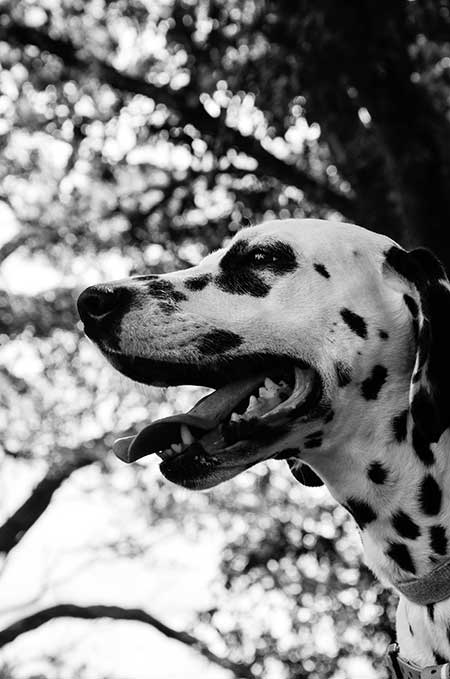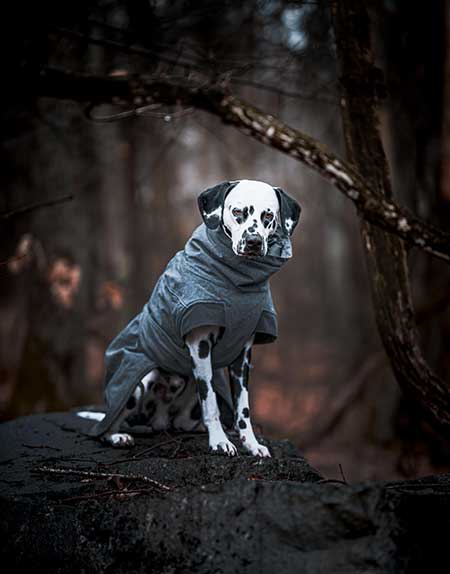Today we are gonna explore the factors and misconceptions. Let’s find out the intriguing world of Dalmatian temperament. Uncover the truth behind the question, “Why are Dalmatians aggressive ?” We dissect the breed’s behavior, debunk myths, and shed light on the factors influencing their deposition.
Understanding behavior: Why are Dalmatians aggressive

Understanding behavior: Why are Dalmatians aggressive
Well, the short answer is that not all Dalmatians are aggressive. It’s stereotyped as outdated as dial-up internet. Some might be a bit feisty, but that’s not unique to this breed.
Ah, Dalmatians, the stars of Disney’s 101 Dalmatians, and beloved firehouse mascots. But let’s talk about a question that often pops up: Why are Dalmatians so aggressive? First thing first, folks, not all Dalmatians are aggressive. That’s like saying all humans are excellent dancers, some of us have two left feet, you know?
Behavior in Dalmatians varies just like it does in people. Genetics play a part, as some lines might have a predisposition to be more assertive. Socialization as upbringing also factors in heavily. A poor socialized Dalmatian can be as pleasant as a root canal.
Historically, they were carriage dogs, guarding the horses and carriages. So, a bit of protectiveness might be in their genes. But remember, times have changed and so have their roles.
My advice? train and socialize your Dalmatian properly. They are smart cookies and can be the most delightful companions. So, to sum it up, Dalmatians can be aggressive, but so can any dog. And hey, let’s drop those outdated stereotypes.
Factors influencing aggressive behavior

Factors influencing aggressive behavior
Many people asked me, are Dalmatians aggressive dogs? I answer with a smile, yes and no. It depends on many facts. There are pros and cons about Dalmatians like any other things on the planet Earth.
A delicate interplay between genetic predisposition, neurochemical elements, contextual effects, social learning, cultural standards, psychological characteristics, and substance misuse leads to aggressive behavior, a complex human trait.
Although genes alone do not drive behavior, they provide the framework since some people inherit genes that predispose them to impulsive or aggressive behaviors. Neurotransmitters like serotonin and dopamine play crucial roles in brain chemistry, which also regulates aggression, imbalances in these chemicals can result in impulsive and aggressive behavior.
Childhood experiences are crucial because a difficult or abusive upbringing can shape people into violent adults and affect how they react to conflict. Social learning is also important, hostility seen in families, peer groups, or the media can be internalized and spread.
Aggressive inclinations are influenced by psychological characteristics including impulsivity, a low threshold for frustration, and an easy disposition to anger. Substance misuse can also weaken inhibitions and impair judgment, which can lead to an increase in aggression.
Since aggressive behavior rarely fits into a single explanation but instead develops as a complex amalgamation of many interconnected components, mitigation strategies that are tailored to each situation are required. Understanding the diverse nature of aggressive behavior is essential for effective intervention and preservation.
Misinterpretation of breed-specific traits
Dog breed stereotypes and discrimination can result from an incorrect knowledge of breed-specific features. Many people ignore the reality that each person’s temperament is influenced by a variety of factors and instead assume that certain traits are inherence.
It is frequently incorrectly assumed that certain breeds, such as Pit Bull, are innately violent, omitting the influence of socialization training and upbringing. Recognizing that genetics do influence a dog’s temperament is vital, but they are only one factor. The environment, training, and proper ownership have a big impact on how a dog acts.
The answer to overcoming these myths is knowledge. Promoting a viewpoint that evaluates dogs based on their attributes as opposed to their breed might result in a more inclusive and equitable perspective on our canine companions, encourage responsible ownership, and lessen stereotype-based discrimination.
Addressing Aggression Through Training and Socialization
Dog aggression must be addressed through training and socialization if owners and their pets are to remain safe and in good health. By exposing young dogs to a variety of situations and lowering the chance of fear-based aggression, early intervention, which starts with puppy socialization classes, lays a solid foundation.
Positive reinforcement strategies such as giving rewards and compliments, foster trust and promote desired behavior. When necessary, controlled exposure to aggression triggers under the supervision of an expert can help dogs become desensitized and retrain their behaviors.
Long-term success requires perseverance and uncompromising consistency in socialization and training approaches. Many dogs may overcome their aggressive inclinations by implementing these preventative measures, leading to happier and safer lives for all parties.
Promoting Responsible Ownership and Breeding

Promoting Responsible Ownership and Breeding
To ensure the welfare of dogs and the preservation of healthy breed populations, responsible ownership and breeding are essential. Prospective pet owners should do extensive research and select a breed that fits their expectations and way of life. Dogs in need of homes can be found through adoption from shelters and rescue organizations.
Responsible breeding practices are crucial for people who are considering it. Breeders should put their dog’s welfare ahead of their financial interests. This entails doing genetic tests, receiving regular veterinary care, and upholding strict standards for animal welfare.
Promoting appropriate ownership and breeding starts with education. Prospective pet owners can make educated selections if resources on dog care, training, and duties are made available.
Additionally, puppy mills and backyard breeding can be deterred by supporting laws and rules that promote ethical breeding practices.
In the end, careful ownership and breeding make sure that dogs enjoy healthier, happier lives and lighten the load on zoos and animal shelters. It’s a team effort that benefits the broader canine community as well as specific dogs such as Dalmatians.
Conclusion
In conclusion, the question, “Why are Dalmatians aggressive?” must be approached with nuance. It’s clear that Dalmatians, like any breed, can display aggression, but it’s essential to recognize that individual temperament is shaped by a multitude of factors, including upbringing and training. Dispelling misconceptions and promoting responsible ownership is key to ensuring the fair treatment of these unique and often misunderstood dogs.
Related Posts: